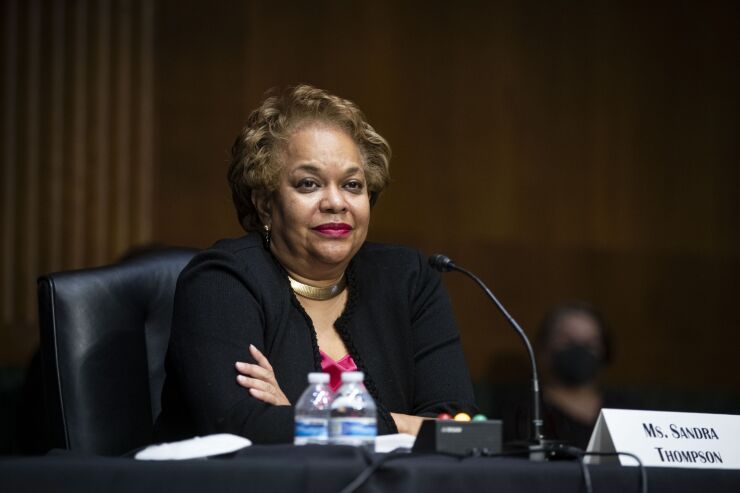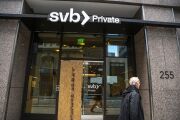
Examiners with the Federal Housing Finance Agency went into overdrive in February after crypto-friendly Silvergate Bank had tapped the Federal Home Loan Bank of San Francisco for billions in cash. By the end of March, after a run on deposits at Silicon Valley Bank, the Home Loan Bank System would end up pumping nearly half-a-trillion dollars to stave off a systemwide liquidity crisis.
In a report Friday, the FHFA's Office of Inspector General described in broad terms how borrowings by Silvergate Bank, Silicon Valley Bank and Signature Bank raised red flags that the Federal Home Loan Bank System was taking on too much risk. After the collapse of
Each of the 11 Federal Home Loan banks will be sent a supervisory letter and an advisory bulletin on bank credit risk from FHFA — their primary regulator — according to the report. FHFA also has issued new supervisory guidance on how the Home Loan banks should assess credit risks particularly of distressed banks.
"Examiners had suspicions across the system about the FHLBanks' evaluation of their members' interest rate risk and liquidity risk management. That work is being informed by examiners' views of the FHLBanks' failure to meet existing expectations," the report stated. "The collapses drew scrutiny … into the FHLBanks' member credit risk management practices and, more broadly, into the system's role in lending to troubled members."
It is unclear whether the FHFA's findings have led to downgrades in the supervisory ratings of any of the Home Loan banks. While supervisory ratings are confidential, the FHFA does include in its annual report to Congress comments on issues faced by individual banks.
The OIG report comes at a particularly precarious time for the Home Loan Bank System. The FHFA is expected to release an anxiously awaited report from FHFA Director Sandra Thompson on the structure, mission and future of the Home Loan Bank System this week, and will likely include dozens of policy recommendations for Congress. Last year, Thompson
The Council of Federal Home Loan Banks, the trade group for the system, declined to comment.
In February, the FHFA questioned management at the Home Loan Bank of San Francisco after
"A large member bank of one FHLBank experienced unprecedented increases in its asset growth due to its involvement in the cryptocurrency market," the report stated. "In late 2022, the member bank suffered wide-spread and continuous deposit withdrawals. Despite the balance sheet contraction, the FHLBank did not timely halt the member bank's borrowing or properly adjust the member bank's credit quality rating to reflect the increased credit risk," the report stated.
Further, FHFA supervisors met with the Home Loan banks' management team in February "to stress the Agency's discomfort with the member bank's financial condition and the FHLBank's risk management of the member bank," the report stated. The examiner-in-charge then updated the Home Loan bank's supervisory strategy "to reflect the market disruption and the weakness of the member bank."
In August, Teresa Bryce Bazemore, president and CEO of the Home Loan Bank of San Francisco, announced she
The OIG report also describes how FHFA's supervisory division scrambled to reallocate resources to examine those Home Loan banks "most affected by the disruption and undertook deep dives into credit risk management at those institutions."
The report said supervisors took the unusual step of deploying a larger team to review Home Loan banks and began focusing on credit risk management and on its cash advance practices. Credit risk is expected to be a supervisory priority for the FHFA in 2024, the OIG report said.
The OIG report also offered some insights into how FHFA responded to the run on deposits at Silicon Valley Bank and the rush by banks of all sizes to raise cash. The outsize role played by the Home Loan Bank System in shoring up the balance sheets of hundreds of banks this year has sparked criticism that banks are using the system as
The system of 11 regional banks operate as private cooperatives that are owned by the system's 6,500 members that include banks, credit unions and insurance companies. The system's Office of Finance — its capital markets hub — issues bonds that come with an implied government guarantee. The bonds fund cash loans, known as "advances," to its members.






